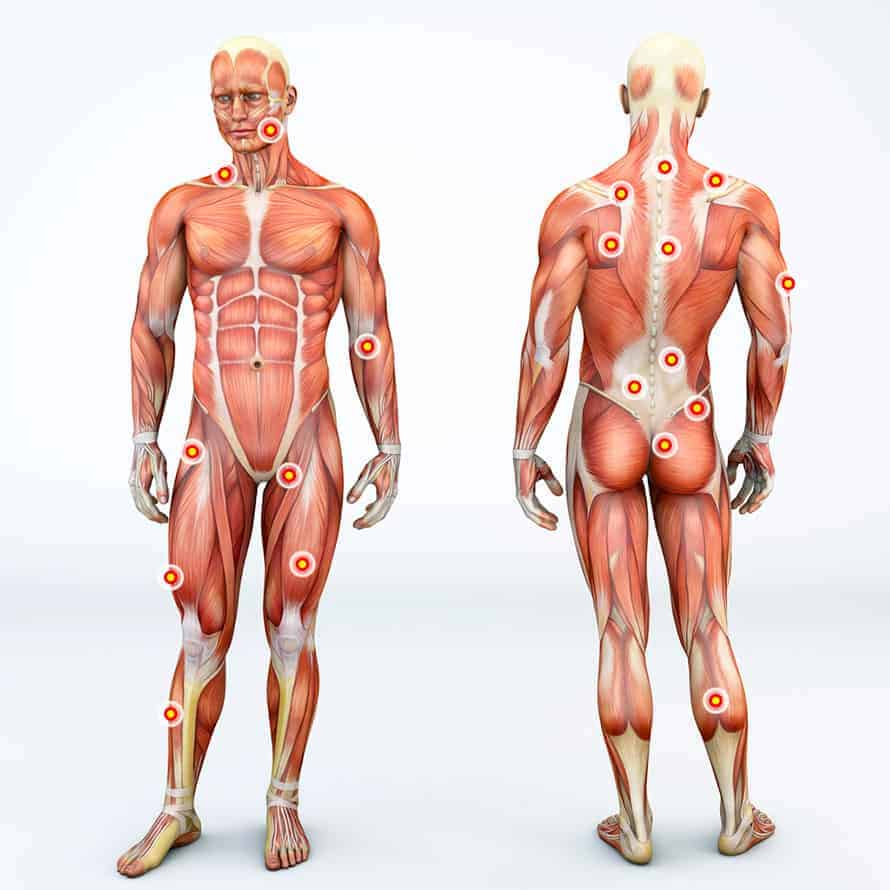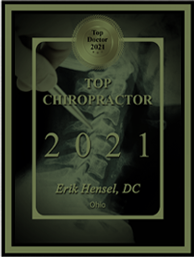Most people are familiar with how sore muscles feel, especially after a hard workout, long flight, or by sitting all day at work. However, many people complain of pain that seems similar to but is different from, muscular pain. For example, some people experience pain when they push or “palpate” on certain areas of their body, such as their arms, legs, neck or back. Such pain may not be noticeable on its own, and may only manifest by manipulation, show up when touched, moved, or challenged in some way. An assumption may be made that pain elicited by pushing on certain areas of the body is muscular pain, and while this certainly could be the case in some situations, there could be another culprit for the pain – fascia.
What Is Fascia?
Fascia is a layer of tissue comprised of collagen that sits just underneath the skin, wraps around your muscles and all other internal organs. Essentially, fascia holds the body together and helps the body communicate from head to toe, right to left, front to back, inside and out. Fascia is how your body creates compensation patterns and why organ dysfunction can cause pain to other areas of your body.
Fascia is often overlooked by traditional medicine when addressing what is thought to be muscular or joint pain. Outside the area of immediate pain, fascia is virtually unrecognized by insurance companies, and thus is often not addressed by many insurance based health care practices and providers.
What Does Fascia Do?
Fascia is distinctive from fatty tissue and muscle tissue in texture, function and appearance. You have seen fascia on the outside of chicken breast. You may have noticed that this thin whitish layer on the outside of chicken breast gets thicker at the ends or maybe in a particular line or path along the meat. This is because fascia is very adaptive and changes by increasing or decreasing thickness, tension, and glide to meet the needs of your body.
Think about cotton candy for a minute. If you’ve ever watched it being spun, it is very whispy to begin with, but as the little paper cone gets swiped around the spinner and more cotton candy is gathered on the cone, the more densely the fibers are compiled and the more difficult it is to pull apart. When there isn’t much cotton candy it’s very wispy and easy to wipe away. The same applies to fascia. Your body is constantly laying down fascia in areas of stillness. When you first wake in the morning or after you’ve been sitting for an extended period of time, and you stand up, you feel the need to take a deep breath and do this big reaching amazing stretch. That stretch is basically melting away any fascia that has laid down during that period of stillness. If you do not move an area for a period of time, the little layers of fascia that are being laid down continue to build on one another creating greater tension in the area and in turn often decreasing range of motion in the area.
How Fascia Affects Your Health
When fascia is too tight, muscles and joints are restricted, and such restriction can cause pain not only in the area of restriction but in other areas of the body connected to that fascial chain. Fascia, muscles, and joints must work together to enable proper bodily function. When fascia, muscles, and joints are not adequately working together, pain may develop, which can increase the chances a person will suffer from muscle-related overuse injuries.
Additionally, restricted fascia in one area of the body can cause pain in an entirely different part of the body. The reason for this is because fascia is tissue that surrounds all muscles equally. Restricted fascia in a person’s back and subsequent sciatic pain down the leg is a recognized example of what can happen when fascia and muscles are not working together as they should. Another commonly known example is tight fascia in the neck that causes headaches, which can be chronic for some people.
The more amazing story of fascia is painted with a deeper understanding of how completely different body parts and areas of the body are linked by fascial restrictions. For example, dysfunction in the stomach or gal bladder will often refer shoulder pain. Therefore, you may have pain in your shoulder before you know the organ is in distress. You may find that tension headaches are being caused by adhesions in the fascia in your calves.
Very frequently, unresolved aches and pains have a root in fascial dysfunction in another part of the body, even as far apart as to link plantar fasciitis to migraines.
More To It Than Myofascial Or Trigger Point Release
Myofascial release is a technique intended to stretch out the fascial tissue underneath the skin, helping the tissue calm down and reduce pressure on muscles. Such release of myofascial tissue is a technique used by many licensed massage therapists.
Myofascial release is great for removing those “wispies” and can even start to break up the more dense layers of fascia, however by itself, a myofascial release will only get you so far. As we mentioned previously, fascial lay down occurs in areas that are not moving well, which further decreases fascial glide, and further restricts range or motion. That means in order to truly restore fascial glide and coordination, adhesions and scar tissue needs to be reduced.
Scar tissue and adhesions are best released with active trigger point release techniques. This means that as the adhesion is being palpated, you should be moving. This both allows the adhesion to release and gives your body feedback about how to reorganize the tissue so that it is stronger and more pliable. Without incorporating movement either during trigger point and fascial release, your body may or may not develop a better movement pattern. When you gain range of motion, you temporarily lose motor control. Training your movement patterns in conjunction with adhesion release and range of motion restoration efficiently and exponentially improves outcomes, pain, and unexpected areas of life.
This type of muscle and fascial work and communication can be facilitated by a health care provider or by using objects, such as a tennis or lacrosse ball to put pressure on the tissue and release the tightness while moving through a range of motion. If the place you are working does not change the discomfort or if the discomfort returns, you likely need to make a change in a different area of the body before the painful point will release.
Added Bonus: Any time fascial release occurs, in addition to reduction in physical pain, you may notice positive effects on overall health. Physical pain can directly affect your mental health. Many people who suffer from chronic pain have difficulty turning their thoughts away from how much pain they are in each day. Alleviating physical pain can eliminate the lingering, and often daily thoughts of pain, improving a person’s mental function and quality of life.
If you are looking for an effective and natural way to treat your pain or discomfort, Contact Active Edge Chiropractic & Functional Medicine to get started.
If you’re tired of “doing all the right things” but not getting the results you’re looking for, Schedule an Activation Education to learn why our different approach means different results for you. Contact Active Edge Chiropractic & Functional Medicine today at (614) 407-5335 to get started.















